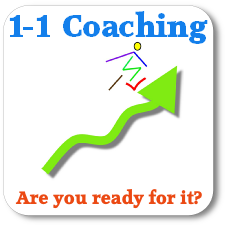I am in possession of a Google Internal document meant only for their ‘human review’ team. It contains 125 pages of instructions and guidelines on how to ‘quality rate’ websites chosen for human review.
Why is this of interest?
Few months back Google made some radical changes to how they rank web pages. If you own a website (or websites) and want to rank higher in Google or you already rank high and want to know whether the recent major changes (called the ‘Panda Update’) will have an impact on your website this will be of use to you. Alternatively your website may have dropped in ranking and this may throw some light as to why. If you help your clients with SEO (Search Engine Optimisation) then this will be of immense value.
A word of caution
At some point this document reached some outsiders. I am not sure whether this was an actual leak or a staged leak. (It could have been a staged leak to get the attention of ‘Black Hat’ SEO (search engine optimisation) professionals and show them their techniques can cause websites to be dropped in ranking!). As I see it this document gives a lot of ‘vague’ instructions to its human review team. So don’t be bogged down in minute details of what Google’s intent was but simply go with the essence of this document.
And a lot we don’t know…
We don’t know to what extent they employ these human reviewers and at what point in the algorithm the human reviews kick in. I am pretty sure not ALL the websites are going to go through human review as it will be impossible.
What we do know….
If this process is useful in improving the ‘quality’ of the search given to end users then this could be included in their algorithm.
Focus of this document
- How Google determines quality and
- How they asses spam flags.
How Google determines quality
They (Google) use a combination of ‘Quality Determinants’ and ‘User Intent’ to asses the ranking of the websites.
Quality determinant
The table below summarises the 4 quality determinants:
| QUALITY DETERMINANTS | Explanations |
| VITAL | (Not in all cases) There is only one site that must be shown for this keyword. If you search for ‘Dell Computers’ them dell.com must be shown and others who sell dell products will be ranked below dell.com |
| RELEVANT | This applies to most of us. This site will contain a lot of high quality information about the specific keyword. This will normally be an authority site with many pages of quality content and a lot of back links. (So if someone is searching for ‘rosacea pictures’ the pages with keywords ‘rosacea’ will not be rated as relevant. (Only pages with keyword ‘rosacea pictures’ will be relevant. (This is the site Google rates as highly relevant: www.edmunds.com/honda/pilot) |
| SLIGHTLY RELEVANT | Here the content is too broad or too specific to be of benefit to the reader. These are considered ‘lite’ websites not intended to give value to its visitors. (This article is given as an example of ‘too broad’ and content similar to that will be considered ‘slightly relevant’ http://bit.ly/rY7FeT) |
| USELESS | Content is not related to keywords. |
Lessons:Your content needs to be original, full of details and very relevant to the keyword. If your keyword is about 33.4 x 79 banner stands, then all the information must belong to 33.4 x 79 banner stands and not just generic banner stands.User intentThe table below summarises the instructions Google gives to its human review team on how to match the quality of the content to user intent.
| User Intent | Explanation |
| DO | This is where the users have‘action’ intent. “Buy Hotpoint 9239db” Here the content needs to help the visitor buy Hotpoint 9239db (Ecommerce sites?) |
| KNOW | Here the visitor is looking for information. (I guess they are looking for information to buy later) |
| GO | Here the user got enough information to go to another site. (Example price comparison sites) |
+ Ravi Peal-Shankar




{ 1 comment… read it below or add one }
Good job